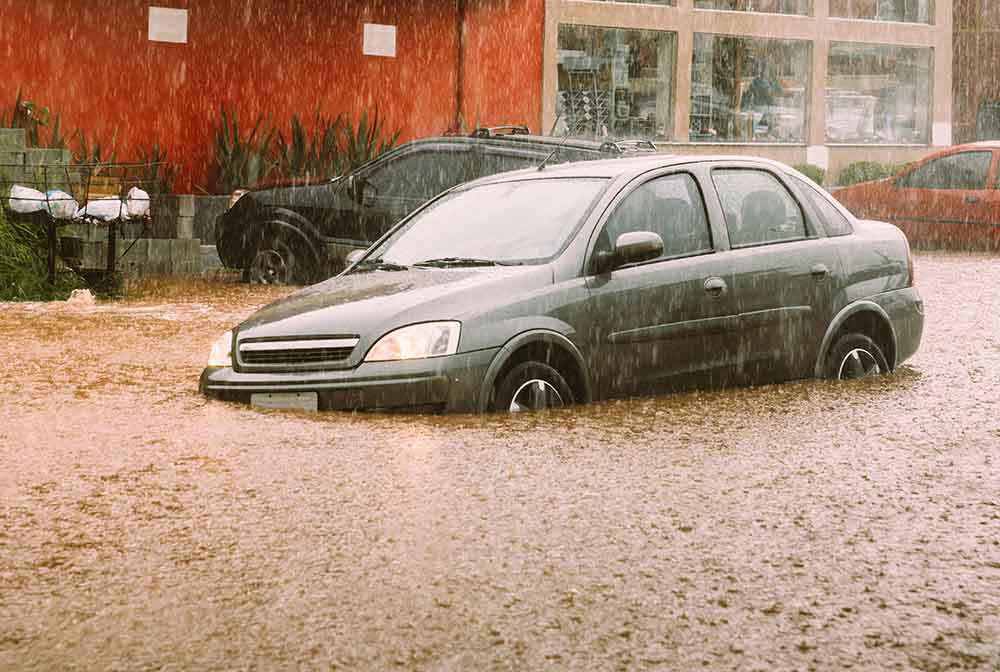Flooding is the most common and destructive natural disaster in the U.S. Its frequency and intensity continue to increase. In the last twenty years, high-tide flooding has more than doubled in the United States. While we can take action to slow down this increase, the occurrence of flooding is not an issue of if but when.
The team at DeVooght House Lifters has created a guide to high-tide flooding that can help you prevent flood damage and where to start if you must rebuild and recover after flooding events.
1. Preserve Wetlands and Marshes: Natural Buffers against Storm Surges
Research links the increase in high-tide flooding to a decrease in wetlands and marshes around the coast. While understanding the cause can’t make the problem disappear, it can inform communities how to restore ecosystems that will protect residential areas and businesses from flood waters.
Wetlands and marshes are natural buffers against storm surges. The vegetation and soft ground in natural wetlands like salt marshes and sea grass beds absorb the impact of storm surges, reducing erosion. They help regulate large amounts of water without being destroyed by it.
When communities focus on wetland preservation, they maintain natural ecosystems that help protect land –– and homes –– from flooding.
2. Create a Plan for Drainage
While communities can’t control the magnitude of flooding, they can redirect standing water. This can be done individually or at the city and state levels.
You can create a drainage plan in your own yard to direct water away from your house. This could include adding drains, underground pipes, or even building a rain garden. Just be sure that whatever drainage features you install are clear and running smoothly –– including your gutters!
Most cities require erosion engineers to plan drainage before new building projects. When standing water is, local governments can assess and redirect it.
3. Seal and Secure Your Home’s Exterior and Foundation
We can take steps to lessen the effects of flooding, but some weather events are so significant that it might be inevitable that flooding will happen around your home.
When this happens, your home’s foundation must be solid and crack-free. Any imperfections in your foundation can allow water to seep, which can erode the slab and cause severe damage to your home.
You should also make sure that your windows and doors have seals that are up to date (including garage doors!) to prevent water damage inside your home.
4. Know the Flood Risk in Your Area
The more you know about weather and flooding patterns in your area, the better you can prepare for emergency events. Flood maps show the risk in each location based on flooding history. If you want to move to a coastal area or already live in a high-risk zone and are considering moving your home to a less risky area, these resources can help you decide where you want to go.
5. Lift Your Home to Mitigate Water Damage and Erosion
If you love your property, community, and town as much as you love your home, you can still significantly reduce the effects of flood damage without relocating to a different city or state. Lifting your home to the appropriate flood protection elevation will help keep your valuable possessions out of harm’s way.
Lifting your home can also save you money and time in the long run. It reduces the risk of foundation erosion and other exterior damage to your home caused by flooding. Since having your home lifted will minimize the risk of damage from high-tide flooding, it also lowers your insurance rates.
6. Make Sure Your Home and Property are Insured
You can do everything to prepare for coastal flooding, but you will sometimes incur damage. When you insure your business or home, you save yourself the financial headache of flood damage repair. Even if you rent, flood insurance will save you from covering the cost of your ruined belongings.
Regardless of your circumstances, insuring your belongings will make recovery easier if you live in a coastal area at risk of flooding.
7. Help Support and Rebuild Your Coastal Community after Flooding
People are often most vulnerable immediately after a disaster. Depending on the severity of the flood, many people lose their homes, cars, irreplaceable mementos, and valuables. Not to mention the physical risks of high-tide flooding.
Flooding can have long-term effects that can be expensive, destructive, and depressing. You can’t change the damage that’s been done, but you can reduce the impact by coming together as a community. By familiarizing yourself with the people around you and listening to neighbors’ needs, you can rebuild a sense of camaraderie, support, and encouragement when everyone needs it most.
Conclusion
Flooding is something we never want to happen, but sometimes we can do nothing to stop it. At DeVooght House Lifters, we focus on what we can control. We can strengthen our communities by providing safety and peace of mind to coastal residents at risk for high-tide flood damage. Connect with our team today to see what you can do to protect your home and family.

